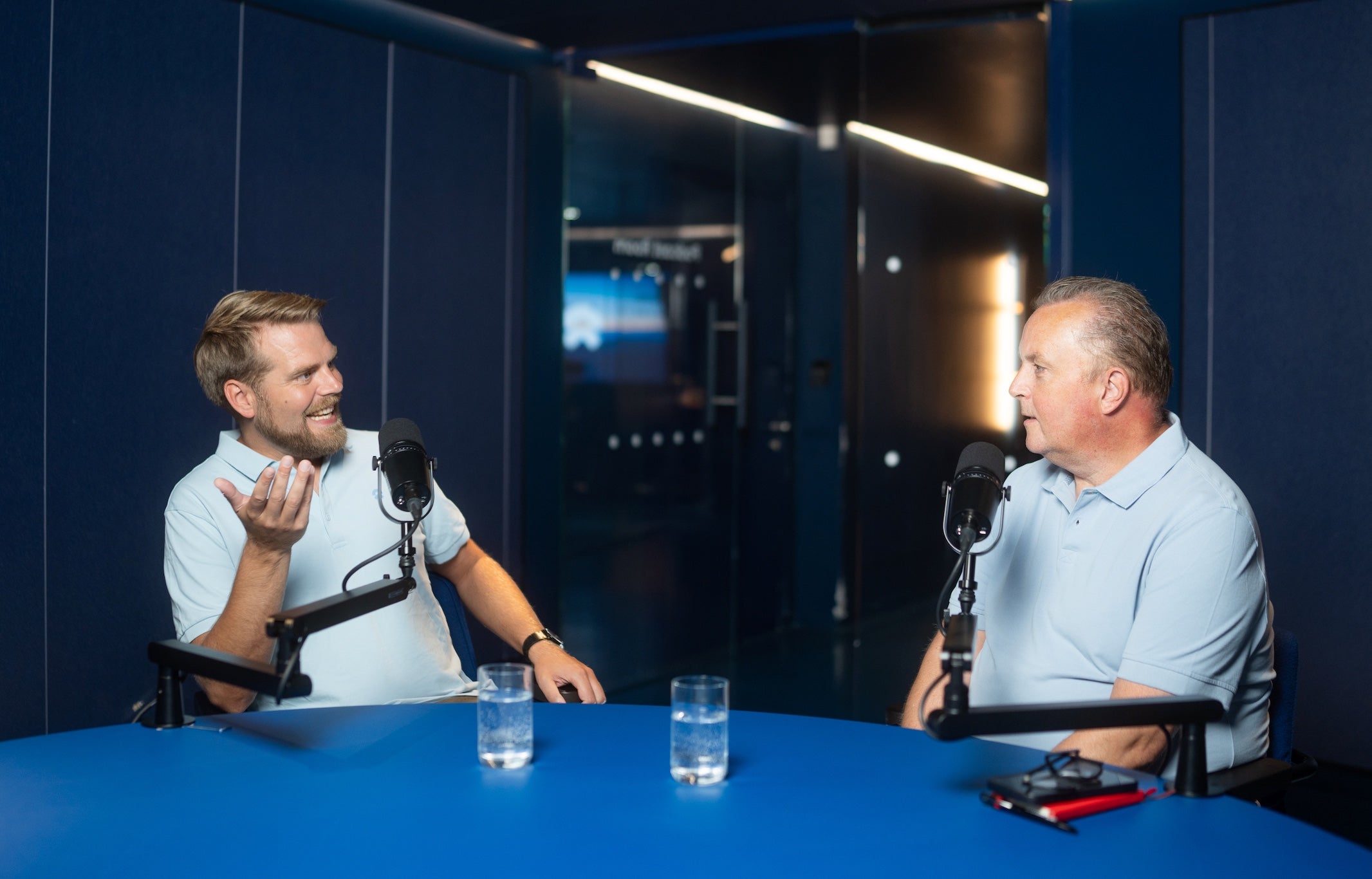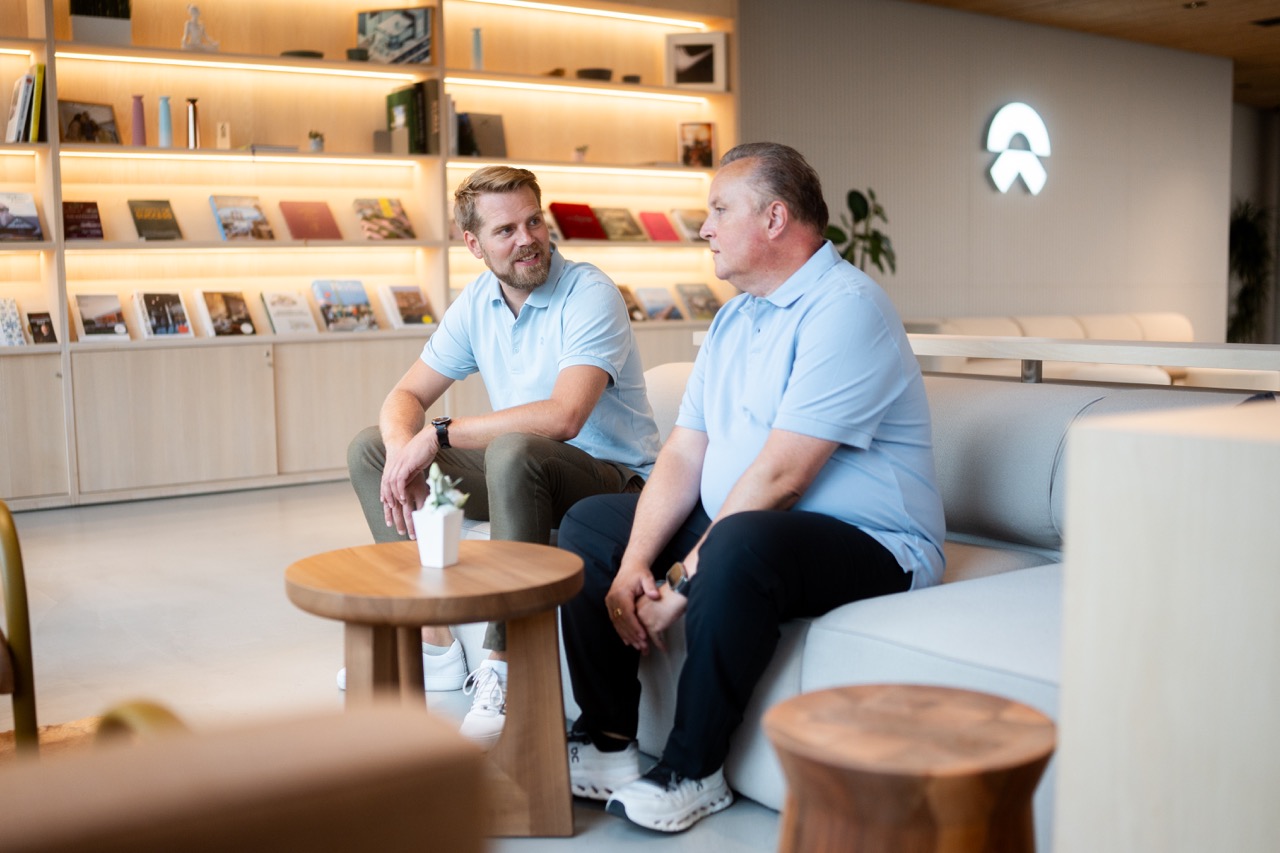House of NIO #3 – From Code to Road: Unpacking the Power of Software-Defined Vehicles
09/27/2024 by NIO

In the third episode of Season 2 of our House of NIO podcast, we delve into the transformative world of software-defined vehicles (SDVs). Joining the discussion are Benjamin Steinmetz, Product Experience Director for NIO Europe, and Steve Fowler, a veteran automotive journalist with over three decades of experience. Together, they explore how SDVs are reshaping the automotive industry – and what this means for the future of mobility.
The buzz around software-defined vehicles
The term software-defined vehicle has emerged as a buzzword at global automotive events like CES and IAA. But what does it actually mean? According to Benjamin Steinmetz, a software-defined vehicle is one that can evolve through software rather than hardware:
“For us, it is a vehicle that can be shaped and changed rather via software than via hardware. The characteristics of a vehicle can be updated to reflect personal preferences or even adapt to new functionalities over time. So in the past, for example, you went to a tuner to put in a new suspension. In the future, and in some cases today, you simply change the software – and the whole suspension experience changes.” – Benjamin Steinmetz
This approach offers unparalleled flexibility for users. For example, households with diverse driving preferences can customize their car’s performance – from sporty handling to a more relaxed and safety-oriented setup – all through software.
“Let’s not talk about software-defined vehicles with consumers. Let’s just talk with them about the benefits. Simple benefits. Keep it clear.” – Steve Fowler
User-centric design: A competitive edge
Our SDV model’s user-first philosophy sets NIO apart from traditional automakers. Unlike legacy manufacturers who retrofit software into hardware-centric vehicles, we design with software as the foundation. This “software-first” mindset enables features like over-the-air updates (OTAs), which keep vehicles up to date and tailored to evolving user needs.
“Newer companies like NIO benefit from starting fresh with software-first designs, while traditional manufacturers face challenges adapting their legacy systems to modern demands.” – Steve Fowler
Navigating challenges and opportunities
While the possibilities of SDVs are vast, they also present unique challenges. For technology to be approachable, it must integrate seamlessly into users’ lives and provide clear benefits:
“You know exactly how people are behaving – and if you put features into cars that people aren't using, you might as well remove them again.” – Steve Fowler
This notion underpins NIO’s approach to prioritizing useful, intuitive technology. Additionally, Steinmetz underscores the need to safeguard critical functions:
“Critical safety functions, like emergency braking, must remain in the car to ensure reliability, even in areas with poor Internet connectivity. Other features, like infotainment, can safely rely on the cloud.” – Benjamin Steinmetz
This distinction ensures that vital systems remain unaffected by external factors, such as poor connectivity, while allowing non-critical features to benefit from cloud-based innovation. Clear boundaries like these are essential to maintaining user trust and system reliability.
A future defined by updates and customization
One of the most exciting aspects of SDVs is the ability to continuously enhance the user experience through over-the-air updates:
“We collect user feedback, merge it with our ideas, and ensure it’s feasible on existing hardware. Each update is rigorously tested before release. This iterative process allows us to bring meaningful improvements to all users, even those with older models.” – Benjamin Steinmetz
This commitment to refining our software through iterative development ensures that our vehicles not only meet current expectations but also anticipate future needs – and enable enhancements that keep every car relevant and high-performing over time.
“Consumers love the idea of waking up to a car that’s better than the day before. Whether it’s improved battery range or new features, the convenience is undeniable.” – Steve Fowler
Building for a diverse and accessible future
Software-defined vehicles also allow for regional and demographic customization. For instance, cars in colder climates can have HVAC systems optimized for extreme temperatures, while older users benefit from accessible interfaces with adjustable icon sizes and voice controls.
Looking ahead, we are exploring the integration of artificial intelligence (AI) to make vehicles even more intuitive:
“The next generation of vehicles will predict user needs before they’re even expressed, reducing interaction and creating a seamless experience.” – Benjamin Steinmetz
Driving the industry forward
The journey toward software-defined vehicles is not without hurdles – but our commitment to user-centric innovation and transparent communication positions us at the forefront of this revolution.
“The industry’s responsibility is to make these benefits clear and accessible. When done right, the potential is extraordinary.” – Steve Fowler
Explore the third episode of Season 2 of House of NIO
We’re pushing the boundaries of what’s possible in mobility. From integrating advanced AI to prioritizing customer-first design, we’re redefining how people interact with their cars. These ideas and more are at the heart of Season 2 of the House of NIO podcast. Now streaming exclusively on Spotify, the season features six monthly episodes exploring smart electric vehicle innovations and the future of mobility. Short insider editions are also available mid-month for quick updates.
For a deeper dive into NIO’s vision for software-defined vehicles, our user-centric approach, and the innovations shaping the future of driving, tune in to Episode 3 of the second season of our House of NIO podcast.













